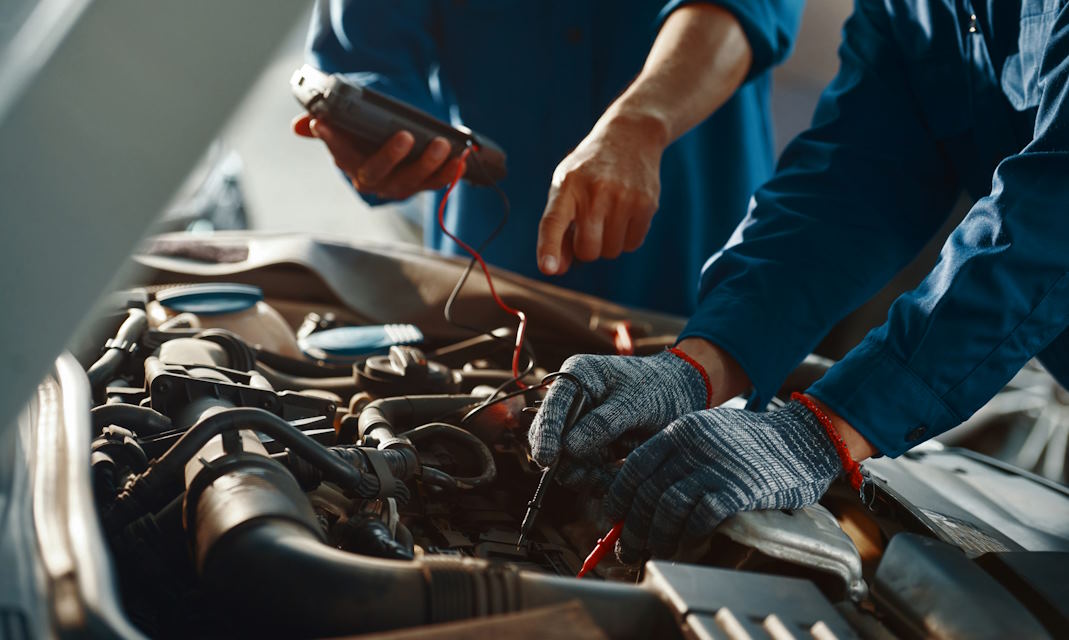
Common Electrical Issues in Cars and How to Troubleshoot Them
Every day, millions of people rely on their vehicles to navigate their busy lives. Whether it’s commuting to work, running errands, or embarking on road trips, cars have become an indispensable part of modern living. However, amidst the convenience and comfort they offer, there lies a complex network of electrical systems that power and control various critical functions in your car. When these electrical systems encounter issues, it can lead to frustration, inconvenience, and sometimes even safety concerns.
Common Electrical Issues in Cars: Troubleshooting and Prevention
As a car owner, you’re likely to encounter electrical issues sooner or later. Understanding these common problems, their symptoms, and how to address them can save you from unexpected breakdowns and costly repairs. In this section, we’ll explore some of the most prevalent electrical issues in cars and provide insights into how to diagnose and resolve them.
Dead Battery
Symptoms:
The most obvious sign of a dead battery is when you turn the key, and nothing happens. Other indicators include dimming headlights, slow engine cranking, and warning lights on the dashboard.
Troubleshooting steps:
- Jump-start your car with jumper cables and another vehicle.
- Use a multimeter to test the battery voltage.
- Inspect battery terminals for corrosion and clean if necessary.
Preventive measures:
- Regularly check the battery’s age and replace it as needed.
- Keep the battery terminals clean and free from corrosion.
- Limit the use of power-hungry accessories when the engine is off.
Faulty Alternator
Symptoms:
Signs of a faulty alternator include a dead battery, flickering lights, and strange electrical behavior like erratic gauge readings.
Troubleshooting steps:
- Test the alternator’s output with a multimeter.
- Check the serpentine belt for wear and tension.
- Inspect the alternator’s wiring for loose connections.
Repair or replacement options:
- Depending on the issue’s severity, you may need to repair or replace the alternator. It’s advisable to consult a professional for a thorough assessment.
Blown Fuses
Symptoms:
- Blown fuses can cause specific electrical components to stop working, such as interior lights or the radio.
Identifying the affected circuit:
- Use the owner’s manual to locate the fuse box and identify the affected circuit. Visually inspect the fuse for signs of damage.
Replacing fuses:
- Replace the blown fuse with one of the same amperage rating. It’s essential to address the underlying issue causing the fuse to blow.
Malfunctioning Starter
Symptoms:
- A malfunctioning starter can result in a clicking sound when you turn the key, or the engine may crank slowly or not at all.
Testing the starter motor:
- Check the starter motor’s connections and test its voltage and current draw. Ensure the starter solenoid is functioning correctly.
Potential repairs:
- Depending on the diagnosis, you may need to repair or replace the starter motor or solenoid.
Bad Spark Plugs and Wires
Symptoms:
- Bad spark plugs and wires can lead to rough idling, misfires, poor fuel efficiency, and difficulty starting the engine.
Checking spark plugs and wires:
- Inspect the spark plugs for signs of fouling or wear. Test the resistance of the spark plug wires.
Replacing or cleaning components:
- Replace worn-out spark plugs and damaged wires. Cleaning or regapping spark plugs can sometimes improve performance.
Electrical Short Circuits
Symptoms:
- Short circuits can cause fuses to blow, lights to flicker, or even electrical fires. They may manifest as burning smells or sparks.
Locating the short circuit:
- Use a multimeter and a systematic approach to trace the short circuit’s location in affected circuits.
Repairing or rewiring affected areas:
- Once the short circuit is identified, repair or replace the damaged wires or components. Ensure proper insulation and protection to prevent future shorts.
Routine Maintenance: Ensuring the Electrical Health of Your Car
Just as regular check-ups keep us healthy, routine maintenance is vital to ensure your car’s electrical system functions flawlessly. Neglecting these essential tasks can lead to costly repairs and inconvenient breakdowns. In this section, we’ll explore the key aspects of routine electrical maintenance to keep your vehicle in peak condition.
Regular Inspection of Electrical Components
To maintain your car’s electrical health, make it a habit to inspect key components regularly. This includes checking the condition of wires, connectors, switches, and relays. Look for signs of wear, damage, or corrosion, as these issues can lead to electrical problems over time. Pay special attention to exposed wires, as they are susceptible to damage from road debris or rodents.
Cleaning Battery Terminals
Clean and corrosion-free battery terminals are crucial for a reliable electrical system. Corroded terminals can hinder the flow of electricity, causing starting issues and electrical problems. To clean them, disconnect the battery cables and scrub the terminals with a mixture of baking soda and water. Afterward, rinse with clean water and reconnect the cables, ensuring a snug fit.
Checking and Replacing Worn-Out Parts
Over time, electrical components like spark plugs, wires, and fuses can wear out. Refer to your car’s maintenance schedule and replace these parts as recommended. Worn spark plugs and damaged wires can lead to reduced engine performance, while blown fuses can disrupt critical functions.
Keeping Electrical Connections Secure
Vibrations from driving can loosen electrical connections, potentially causing intermittent problems. Periodically inspect and tighten these connections to ensure they remain secure. Pay attention to battery terminals, ground connections, and wiring harnesses. A loose connection can lead to voltage drops, affecting various electrical systems.


